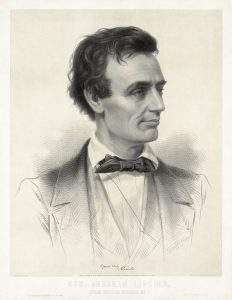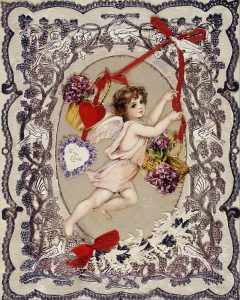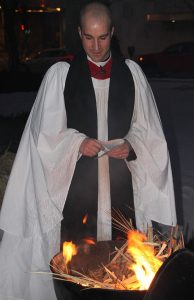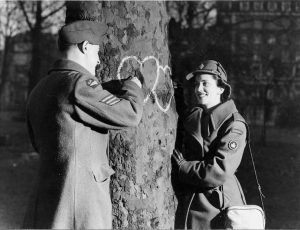February Features Both The Sacred And The Secular
Lincoln’s Birthday: February 12

Lincoln’s Birthday is a legal, public holiday in some U.S. states, observed on the anniversary of Abraham Lincoln’s birth on February 12, 1809 in Hodgenville (Hodgensville, Hodgen’s Mill), Kentucky. Connecticut, Illinois, Indiana, Ohio, Texas, California, Missouri, and New York observe the holiday.
In other states, Lincoln’s birthday is not celebrated separately, as a stand-alone holiday. Instead Lincoln’s Birthday is combined with a celebration of President George Washington’s birthday (also in February) and celebrated either as Washington’s Birthday or as Presidents’ Day on the third Monday in February, concurrent with the federal holiday.
History
The earliest known observance of Lincoln’s birthday occurred in Buffalo, New York, in either 1873 or 1874. Julius Francis (d. 1881), a Buffalo druggist, made it his life’s mission to honor the slain president. He repeatedly petitioned Congress to establish Lincoln’s birthday as a legal holiday.
The day is marked by traditional wreath-laying ceremonies at Abraham Lincoln Birthplace National Historic Site in Hodgenville, Kentucky, and at the Lincoln Memorial in Washington, D.C. The latter has been the site of a ceremony ever since the Memorial was dedicated.
Since that event in 1922, observances continue to be organized by the Lincoln Birthday National Commemorative Committee and by the Military Order of the Loyal Legion of the United States (MOLLUS). A wreath is laid on behalf of the President of the United States, a custom also carried out at the grave sites of all deceased U.S. presidents on their birthdays. Lincoln’s tomb is in Springfield, Illinois.
Bicentennial Birthday
On February 12, 2009, the annual wreath-laying ceremony at the Lincoln Memorial commemorated Lincoln’s 200th birthday in grand fashion. An extended ceremony, organized by the Abraham Lincoln Bicentennial Commission (ALBC) and with help from MOLLUS, featured musical performances from four-time Grammy-nominated singer Michael Feinstein and the U.S. Marine Corps Band. The morning celebration also featured remarks by Illinois Sen. Dick Durbin; Lincoln scholar and ALBC Co-Chair Harold Holzer; recently retired Rhode Island Supreme Court Chief Justice – and ALBC Commissioner – Frank J. Williams; and author Nikki Giovanni reciting her newest work, which was written especially for the Bicentennial.
New Cents
As part of Lincoln’s birthday bicentennial, the U.S. Mint released four new Lincoln cents. The commemorative coins have new designs on the reverse showing stages of his life. The first went into circulation on September 12, 2009. The standard portrait of Lincoln’s head remains on the front. The new designs include a log cabin representing his birthplace, Lincoln as a young man reading while sitting on a log that he was taking a break from splitting, Lincoln as a state legislator in front of the Illinois Capitol, and the partially built dome of the U.S. Capitol.
New Jersey stopped observing the holiday on May 23, 2005 with the enactment of the Public Employee Pension and Benefits Reform Act of 2008.
Origin Of Black History Month
Black History Month has its origin in 19th-century celebrations of Lincoln’s Birthday by African-American communities in the United States. By the early 20th century, black communities were annually celebrating Lincoln’s birthday in conjunction with the birthday of former slave and abolitionist Frederick Douglass on February 14.
Official Government Holidays
Lincoln’s Birthday was never a U.S. Federal Government holiday. The third Monday in February remains only “Washington’s Birthday” in federal law. However, many state governments have officially renamed their Washington’s Birthday state holiday as “Presidents’ Day”, “Washington and Lincoln Day”, or other such designations which explicitly or implicitly celebrate Lincoln’s birthday. Regardless of the official name and purpose, celebrations and commemorations on or about the third Monday often include honoring Lincoln.
Valentine’s Day: February 14
Saint Valentine
 Valentine’s Day, also called Saint Valentine’s Day or the Feast of Saint Valentine, is celebrated annually on February 14. It originated as a Western Christian feast day honoring one or two early Christian martyrs named Saint Valentine and is recognized as a significant cultural, religious, and commercial celebration of romance and love in many regions of the world.
Valentine’s Day, also called Saint Valentine’s Day or the Feast of Saint Valentine, is celebrated annually on February 14. It originated as a Western Christian feast day honoring one or two early Christian martyrs named Saint Valentine and is recognized as a significant cultural, religious, and commercial celebration of romance and love in many regions of the world.
The Feast of Saint Valentine was established by Pope Gelasius I in AD 496 to be celebrated on February 14 in honor of Saint Valentine of Rome, who died on that date in AD 269. The day became associated with romantic love in the 14th and 15th centuries when notions of courtly love flourished, apparently by association with the “lovebirds” of early spring.
Symbols Of Love

In 18th-century England, it grew into an occasion in which couples expressed their love for each other by presenting flowers, offering confectionery, and sending greeting cards (known as “valentines”). Valentine’s Day symbols that are used today include the heart-shaped outline, doves, and the figure of the winged Cupid. Since the 19th century, handwritten valentines have given way to mass-produced greeting cards.
Feast Day
Saint Valentine’s Day is not a public holiday in any country, although it is an official feast day in the Anglican Communion and the Lutheran Church.
Legend


 According to legend, in order “to remind these men of their vows and God’s love, Saint Valentine is said to have cut hearts from parchment”, giving them to these soldiers and persecuted Christians, a possible origin of the widespread use of hearts on St. Valentine’s Day.
According to legend, in order “to remind these men of their vows and God’s love, Saint Valentine is said to have cut hearts from parchment”, giving them to these soldiers and persecuted Christians, a possible origin of the widespread use of hearts on St. Valentine’s Day.
Saint Valentine supposedly wore a purple amethyst ring, customarily worn on the hands of Christian bishops with an image of Cupid engraved in it, a recognizable symbol associated with love that was legal under the Roman Empire; Roman soldiers would recognize the ring and ask him to perform marriage for them. Probably due to the association with Saint Valentine, amethyst has become the birthstone of February, which is thought to attract love.
Folk Traditions
 While the European folk traditions connected with Saint Valentine and St. Valentine’s Day have become marginalized by the modern Anglo-American customs connecting the day with romantic love, there are some remaining associations connecting the saint with the advent of spring.
While the European folk traditions connected with Saint Valentine and St. Valentine’s Day have become marginalized by the modern Anglo-American customs connecting the day with romantic love, there are some remaining associations connecting the saint with the advent of spring.
While the custom of sending cards, flowers, chocolates and other gifts originated in the UK, Valentine’s Day still remains connected with various regional customs in England. In Norfolk, a character called ‘Jack’ Valentine knocks on the rear door of houses leaving sweets and presents for children. Although he was leaving treats, many children were scared of this mystical person.
UK Valentine Cards
In 1797, a British publisher issued The Young Man’s Valentine Writer, which contained scores of suggested sentimental verses for the young lover unable to compose his own. Printers had already begun producing a limited number of cards with verses and sketches, called “mechanical valentines.” Paper Valentines became so popular in England in the early 19th century that they were assembled in factories. Fancy Valentines were made with real lace and ribbons, with paper lace introduced in the mid-19th century.
A reduction in postal rates following Sir Rowland Hill’s postal reforms with the 1840 invention of the postage stamp (Penny Black) saw the number of Valentines posted increase, with 400,000 sent just one year after its invention, and ushered in the less personal but easier practice of mailing Valentines. The Laura Seddon Greeting Card Collection at Manchester Metropolitan University gathers 450 Valentine’s Day cards dating from early nineteenth century Britain, printed by the major publishers of the day. The collection appears in Seddon’s book Victorian Valentines (1996).
U.S. Valentine Cards
In the United States, the first mass-produced Valentines of embossed paper lace were produced and sold shortly after 1847 by Esther Howland (1828–1904) of Worcester, Massachusetts. Her father operated a large book and stationery store, but Howland took her inspiration from an English Valentine she had received from a business associate of her father. Intrigued with the idea of making similar Valentines, Howland began her business by importing paper lace and floral decorations from England. Since 2001, the Greeting Card Association has been giving an annual “Esther Howland Award for a Greeting Card Visionary”.[71]
Since the 19th century, handwritten notes have given way to mass-produced greeting cards. In the UK, just under half of the population spend money on their Valentines, and around £1.9 billion was spent in 2015 on cards, flowers, chocolates and other gifts.
Chocolates

In 1868, the British chocolate company Cadbury created Fancy Boxes – a decorated box of chocolates – in the shape of a heart for Valentine’s Day. Boxes of filled chocolates quickly became associated with the holiday.
The U.S. Greeting Card Association estimates that approximately 190 million valentines are sent each year in the US. Half of those valentines are given to family members other than husband or wife, usually to children. When the valentine-exchange cards made in school activities are included , the figure goes up to 1 billion, and teachers become the people receiving the most valentines. The average valentine’s spending has increased every year in the U.S, from $108 a person in 2010 to $131 in 2013.
Internet
The rise of Internet popularity at the turn of the millennium is creating new traditions. Millions of people use, every year, digital means of creating and sending Valentine’s Day greeting messages such as e-cards, love coupons or printable greeting cards. An estimated 15 million e-valentines were sent in 2010.
Liturgically
In the modern era, liturgically, the Anglican Church has a service for St. Valentine’s Day (the Feast of St. Valentine), which includes the optional rite of the renewal of marriage vows. In 2016, Catholic Bishops of England and Wales established a novena prayer “to support single people seeking a spouse ahead of St Valentine’s Day”.
Presidents’ Day: February 15/Washington’s Birthday: February 22

Washington’s Birthday is a federal holiday in the United States celebrated on the third Monday of February in honor of George Washington, the first president of the United States, who was born on February 22, 1732. The Uniform Monday Holiday Act of 1971 moved this holiday to the third Monday, which can fall from February 15 to 21, inclusive.
Colloquially, the day is also now widely known as Presidents’ Day (though the placement of the apostrophe, if any, varies) and is often an occasion to remember all the presidents.
Official Names
The day is a state holiday in most states, with official names including Washington’s Birthday, Presidents’ Day, President’s Day, and Washington’s and Lincoln’s Birthday. The various states use 14 different names. Depending upon the specific law, the state holiday may officially celebrate Washington alone, Washington and Lincoln, or some other combination of U.S. presidents (such as Washington and Thomas Jefferson, who was born in April).
Although Lincoln’s Birthday, February 12, was never a federal holiday, nearly half of the state governments have officially renamed their Washington’s Birthday observances as “Presidents’ Day”, “Washington and Lincoln Day”, or other such designations. (In historical rankings of presidents of the United States Lincoln and Washington are frequently the top two presidents.)
Ash Wednesday: February 17
Ash Wednesday is a Christian holy day of prayer and fasting. It is preceded by Shrove Tuesday and falls on the first day of Lent, the six weeks of penitence before Easter. Ash Wednesday is traditionally observed by Western Christians. It is observed by Catholics in the Roman Rite, Anglicans, Lutherans, Methodists, Moravians, and Independent Catholics, as well as by many from the Reformed faith (inclusive of the Congregationalist, Continental Reformed, and Presbyterian traditions).
As it is the first day of Lent, many Christians begin Ash Wednesday by marking a Lenten calendar, praying a Lenten daily devotional, and making a Lenten sacrifice that they will not partake of until the arrival of Eastertide.
Ash Wednesday derives its name from the placing of repentance ashes on the foreheads of participants to either the words “Repent, and believe in the Gospel” or the dictum “Remember that you are dust, and to dust you shall return.” The ashes are prepared by burning palm leaves from the previous year’s Palm Sunday celebrations.
Observances
Many Christian denominations emphasize fasting as well as abstinence during the season of Lent and in particular, on its first day, Ash Wednesday. The First Council of Nicæa spoke of Lent as a period of fasting for forty days, in preparation for Eastertide. In many places, Christians historically abstained from food for a whole day until the evening, and at sunset, Western Christians traditionally broke the Lenten fast, which is often known as the Black Fast.
There is a strong biblical base for fasting, particularly during the 40 days of Lent leading to the celebration of Easter. Jesus, as part of his spiritual preparation, went into the wilderness and fasted 40 days and 40 nights, according to the Gospels.
Many of the Churches in the Reformed tradition retained the Lenten fast in its entirety, although it was made voluntary, rather than obligatory.
Ashes
Ashes are ceremonially placed on the heads of Christians on Ash Wednesday, either by being sprinkled over their heads or, in English-speaking countries, more often by being marked on their foreheads as a visible cross. The words (based on Genesis 3:19) used traditionally to accompany this gesture are, “Memento, homo, quia pulvis es, et in pulverem reverteris.” (“Remember, man, that thou art dust, and to dust thou shalt return.”) . In the 1969 revision of the Roman Rite, an alternative formula (based on Mark 1:15) was introduced and given first place “Repent, and believe in the Gospel” and the older formula was translated as “Remember that you are dust, and to dust you shall return.” The old formula, based on the words spoken to Adam and Eve after their sin, reminds worshippers of their sinfulness and mortality and thus, implicitly, of their need to repent in time.
Various manners of placing the ashes on worshippers’ heads are in use within the Roman Rite of the Catholic Church, the two most common being to use the ashes to make a cross on the forehead and sprinkling the ashes over the crown of the head. Originally, the ashes were strewn over men’s heads, but, probably because women had their heads covered in church, were placed on the foreheads of women. (In 2021, the Congregation for Divine Worship and the Discipline of the Sacraments issued guidance that suggested that priests should use the sprinkling method in all cases, due to the COVID-19 pandemic.)
In addition, those who attend such Catholic services, whether in a church or elsewhere, traditionally take blessed ashes home with them to place on the heads of other members of the family, and it is recommended to have envelopes available to facilitate this practice. At home the ashes are then placed with little or no ceremony.
Ashes From Palm Branches
The Catholic Church and the Methodist Church say that the ashes should be those of palm branches blessed at the previous year’s Palm Sunday service, while a Church of England publication says they “may be made” from the burnt palm crosses of the previous year. Where ashes are placed on the head by smudging the forehead with a sign of the cross, many Christians choose to keep the mark visible throughout the day.
Ashes To Go
Since 2007, some members of major Christian Churches in the United States, including Anglicans, Lutherans, and Methodists, have participated in ‘Ashes to Go’ activities, in which clergy go outside of their churches to public places, such as city centers, sidewalks and railroad stations, to distribute ashes to passers-by, even to people waiting in their cars for a stoplight to change.
In 2013, churches not only in the United States, but also at least one church each in the United Kingdom, Canada and South Africa, participated in Ashes to Go. In the United States itself, 34 states and the District of Columbia had at least one church taking part. Most of these churches (parishes) were Episcopal, but there were also several Methodist churches, as well as Presbyterian and Catholic churches.
Dates
Ash Wednesday and other named days and day ranges around Lent and Easter in Western Christianity, with the fasting days of Lent numbered. Ash Wednesday is exactly 46 days before Easter Sunday, a moveable feast based on the cycles of the moon.































